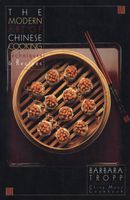Advertisement
Tree Ears
木耳 mandarin: moo-er; Cantonese: maw-yee
Published 1982

Also called wood ears, cloud ears, Jew’s ears, and dried black fungus in English, this rubbery but crunchy, saucer-shaped fungus (Auricularia polytricha) is habitually dried for use in Chinese cooking. It is tasteless, but nonetheless valued for its rich, brown-black color and its intriguing texture. It is typically paired with golden needles, and featured in the well-known dishes hot and sour soup and mu-shu pork.
There are two types of tree ears found in Chinese markets. The type to get is fortunately also the most common, thumb nail-size, irregular bits of blackness without any sheen, bagged in plastic, about 2 ounces per bag. The sort to avoid is called “white-backed black tree ear” in Chinese, and has a relatively shiny black “belly” and a fuzzy-looking, light tan “back.” The latter are huge and tough once soaked and look more like something to resole a jogging shoe than to put in a bowl of soup.


